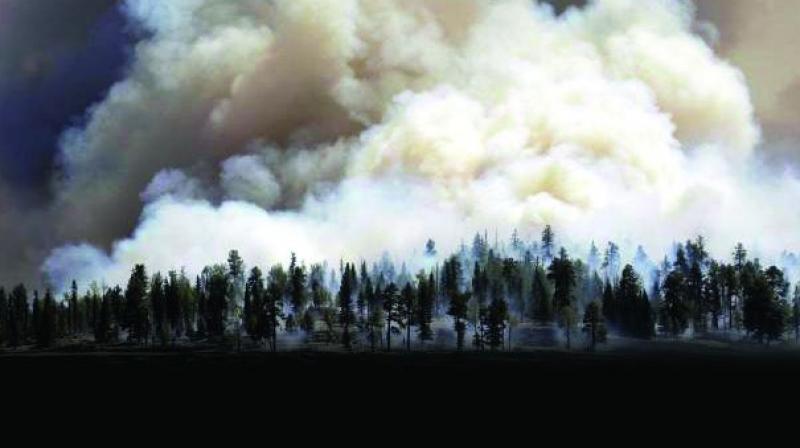Minor particles pose major risk
Black carbon is one of the most harmful pollutants in the environment.

Hyderabad: Scientists from the National Remote Sensing Centre, Hyderabad, through a research conducted over a period of five years, found that the annual average of black carbon over the city is 9.7µg/m3(micrograms per metre cube). The maximum level was observed in the post-monsoon period at 11.46µg/m3 while the lowest was 7.7µg/m3 during monsoon. The drop during monsoon is attrributed to the wash out effect of rain on the black carbon particles.
Black carbon is one of the most harmful pollutants in the environment. It falls in fine particulate matter category with diameter less than 2.5micrometres and gets suspended in the air forming aerosol. Black carbon aerosols have been found to have potential to induce climate change by increasing temperature and affecting rainfall pattern. However, there are no safety standards set for the pollutant yet, globally or nationally.
Cutting down vehicular emission is the most effective way to reduce black carbon in the atmosphere as it is a major source of the pollutant. One example of how vehiclular emissions directly impact black carbon presence in atmosphere is explained by the scientists in their paper.
On August 19, 2014 Telangana government had conducted a statewide socio-economic survey as a result of which there was almost no vehicular traffic and Hyderabad came close to shutdown. On the day the black carbon levels over the city decreased by 75 per cent.
Not just this but the black carbon levels were found to be peaking twice a day. It happens in the morning between 7am and 9am while at night from 8pm onward. It is lowest between 11am and 5pm. While one reason is because of a phenomenon known as fumigation effect, another main reason is the building up of traffic during the mornings and later from evening towards the night resulting in higher concentrations of black carbon during the two time periods in a day.
Dr Umesh Chandra Kulshrestha, expert on atmospheric aerosols and Professor at the School of Environmen-tal Sciences, JNU, New Delhi, says, “Black carbon has been known to have existed since many years and is known to have negative impact on human health as well as environment. There is a serious need now to conduct epidemiological and toxicological tests of black carbon and to understand its complexity of occurrence so that a standard can be set on its levels in the atmosphere. The government has been talking about Particulate Matter2.5 pollution under which black carbon falls but there has been no chemical characterisation of the PM2.5 till now to understand what are the particles that are actually harmful, what should be there level in the environment and what effect they would have on human health generally.”
New Delhi -15
Kanpur -7.03
Chandigarh -3.7
Dibrugarh -9.5
Kolkata -5.8
Mumbai -12.4
Ahmedabad -2.1
Pune -4.5
Trivandrum -3.44
Bangaluru -3.21
